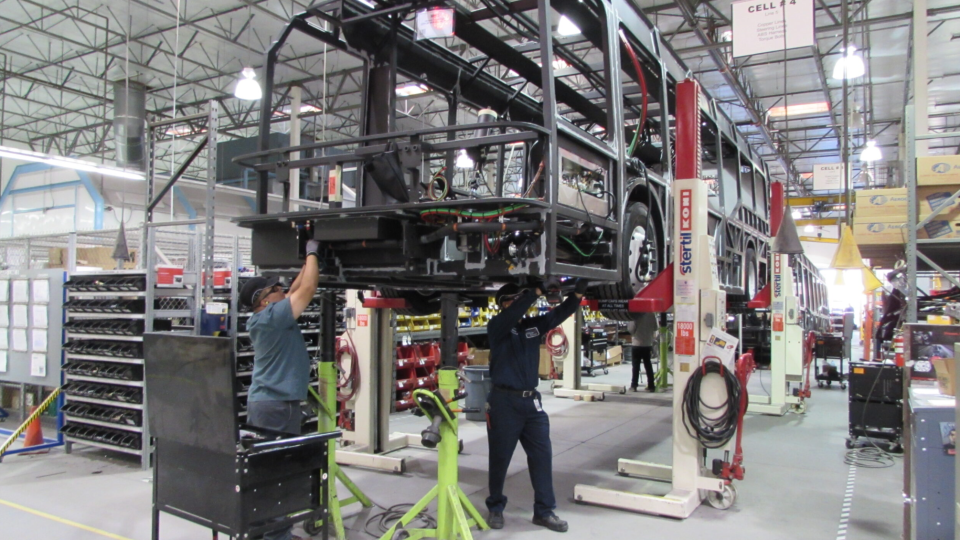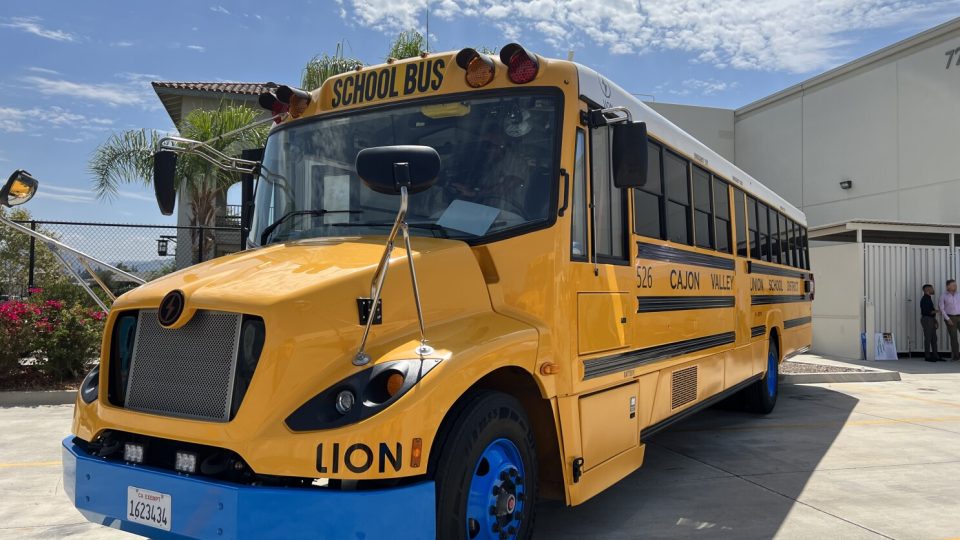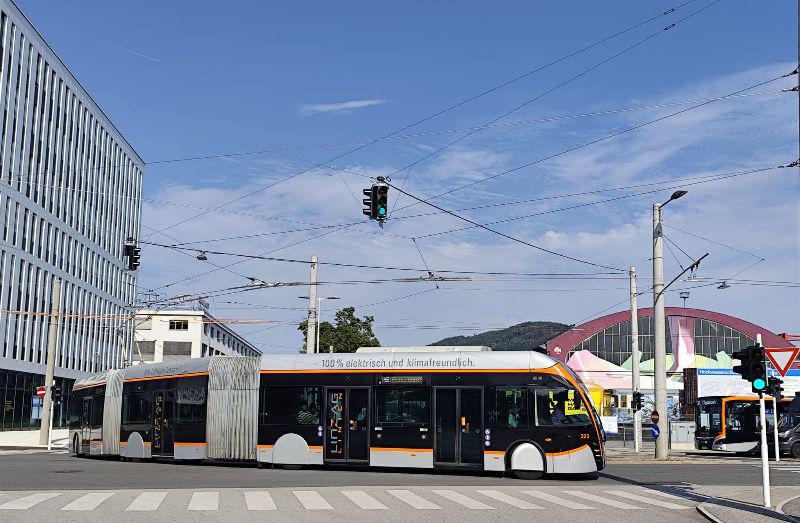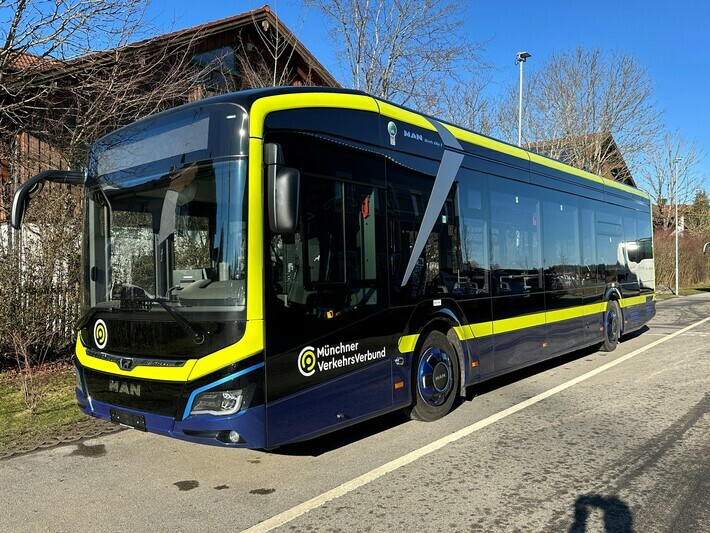A pilot project launched in Canada aiming to turn electric buses into mobile power plants (a way to monetize EV fleets?)
Energy utility BC Hydro is announcing Canada’s first vehicle-to-grid pilot project for medium and heavy-duty vehicles that will enable electricity to be pushed back to the grid from the battery of an electric vehicle (EV). The project has been launched in cooperation with tourist operator Coast to Coast Experiences (CTCE), determined to electrify its fleet in […]
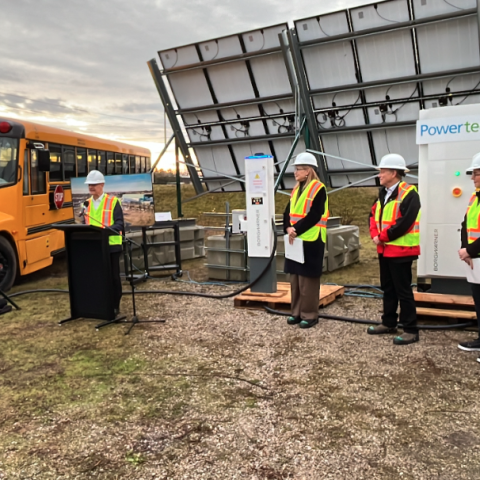
Energy utility BC Hydro is announcing Canada’s first vehicle-to-grid pilot project for medium and heavy-duty vehicles that will enable electricity to be pushed back to the grid from the battery of an electric vehicle (EV). The project has been launched in cooperation with tourist operator Coast to Coast Experiences (CTCE), determined to electrify its fleet in North America. Consortium’s partners include The Lion Electric, BorgWarner, PowerTech Labs and Fermata Energy, a specialist in V2G service.
The bidirectional charging trial project for medium-sized vehicles such as buses, and heavy-duty vehicles like transport trucks, is the first of its kind in the province, and the country. Compared to other back-up generation, these medium-sized vehicles can be mobilized much faster than traditional sources like diesel generators and they are far cleaner.
The V2G pilot project is fully commissioned and operational over the next 2 weeks, participating in a variety of grid programs while creating a V2G road map for BC Hydro and laying the foundation for distributed V2G charging hubs throughout North America.
An attempt to monetize electric vehicles’ fleets
To this extent, BC Hydro says it has successfully tested a 60-kilowatt charger connecting a Lion Electric school bus from Lynch Bus Lines. “The typical bus battery holds 66 kilowatts of electricity – or enough to power 24 single family electrically-heated homes for almost two hours”, BC Hydro states. And adds: “Today, B.C. has thousands buses on its roads. If 1,000 buses were converted to electric, the buses could power 24,000 homes for two hours“.
Fermata Energy’s bidirectional charging platform enables the parked electric buses to be utilized as mobile batteries with stored energy discharged to mitigate peak energy demand, send power back to the grid, lower the vehicles’ total cost of ownership and create value for electric fleet operators. The pilot is indeed designed to test the technical feasibility of bidirectional charging and mobile grid infrastructure, opening up the opportunity to monetize electric fleets.
Fermata Energy points out that “CTCE electric buses, which stand idle many hours each day, can become valuable mobile power plants, allowing utilities, such as BC Hydro, to leverage power from the bidirectionally-enabled electric vehicle during peak periods to offset the grid. This will be especially crucial during inclement weather and natural disasters when extreme pressure on the grid creates the potential for outages”.
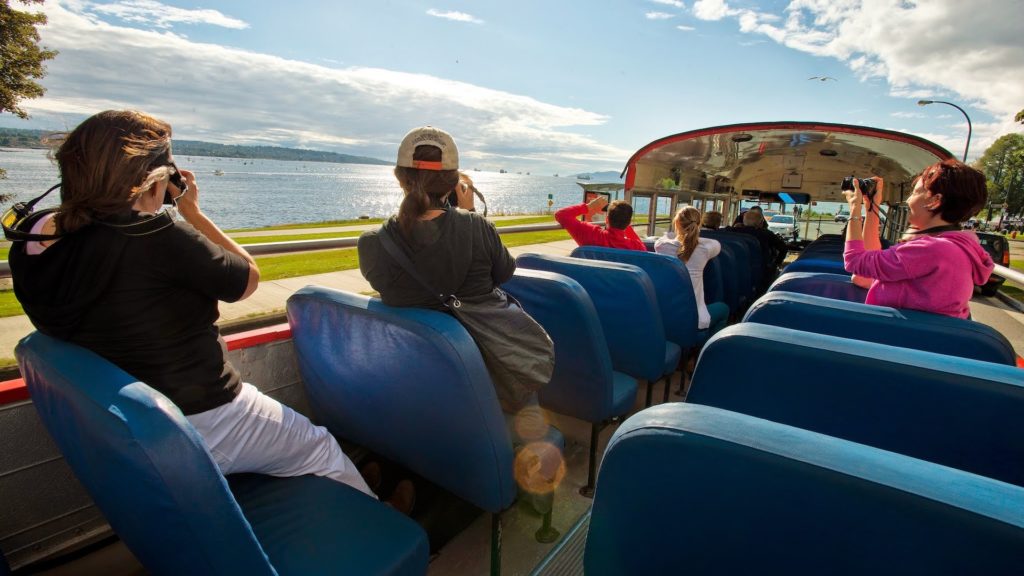
BC Hydro, Lion Electric, BorgWarner, PowerTech Labs and Fermata Energy, CTCE
Josie Osborne, Minister of Energy Mines and Low Carbon Innovation. “The rapid rise in electric vehicle sales in recent years means we can expect to see up to 900,000 EVs in use in the next decade, and innovative vehicle-to-grid energy solutions could expand the use of EVs even further to provide more benefits to British Columbians.”
“The average car is parked 95 per cent of the time, and with of the evolution of technology solutions like vehicle-to-grid, stationary vehicles hold the potential to become mobile batteries, powered by clean and affordable electricity,” said Chris O’Riley, President and CEO of BC Hydro. “We are grateful to the Province for their support and funding, and we are proud to be working with our partners at Powertech and Coast to Coast Experiences to trial a technology that has the exciting potential to benefit communities right across B.C.”
“This project implements an exciting milestone for Fermata Energy and the V2G industry as we successfully demonstrate bidirectional charging on the Combined Charging Standard (CCS1), which has been widely adopted in the North American market. Our integration with Lion Electric and BorgWarner allows us to leverage our AI-driven cloud-based V2X software platform to determine where power is needed most as we support CTCE in maximizing the value of their electric fleet,” says Tony Posawatz, CEO of Fermata Energy. “In collaboration with Powertech Labs and BC Hydro, this pilot is a great opportunity to capitalize on existing resources to build a stronger grid, create additional sources, and ultimately provide grid stability and economic value to ratepayers.”
“This technology offers a host of new opportunities for British Columbians – everything from feeding electricity from your personal vehicle back to your home during a power outage to powering homes off-grid in times of need,” said Pierre Poulain, President and CEO of Powertech Labs. “But bidirectional charging hubs for medium-sized vehicles and even larger vehicles in the future opens the door to so many more benefits, and as one of the largest testing and research labs in North America, Powertech is proud to be part of this first-of-its-kind trial in Canada.”
“Determined to electrify our entire fleet in North America, we are excited to be creating grid infrastructure solutions,” said Robby Safrata, CEO of Coast to Coast Experiences. “This technology will enable commercial electric fleet operators, when their vehicles are sitting idle, to create a high-power, mobile, bi-directional power plan that can support grid reliance and power homes and buildings.”



